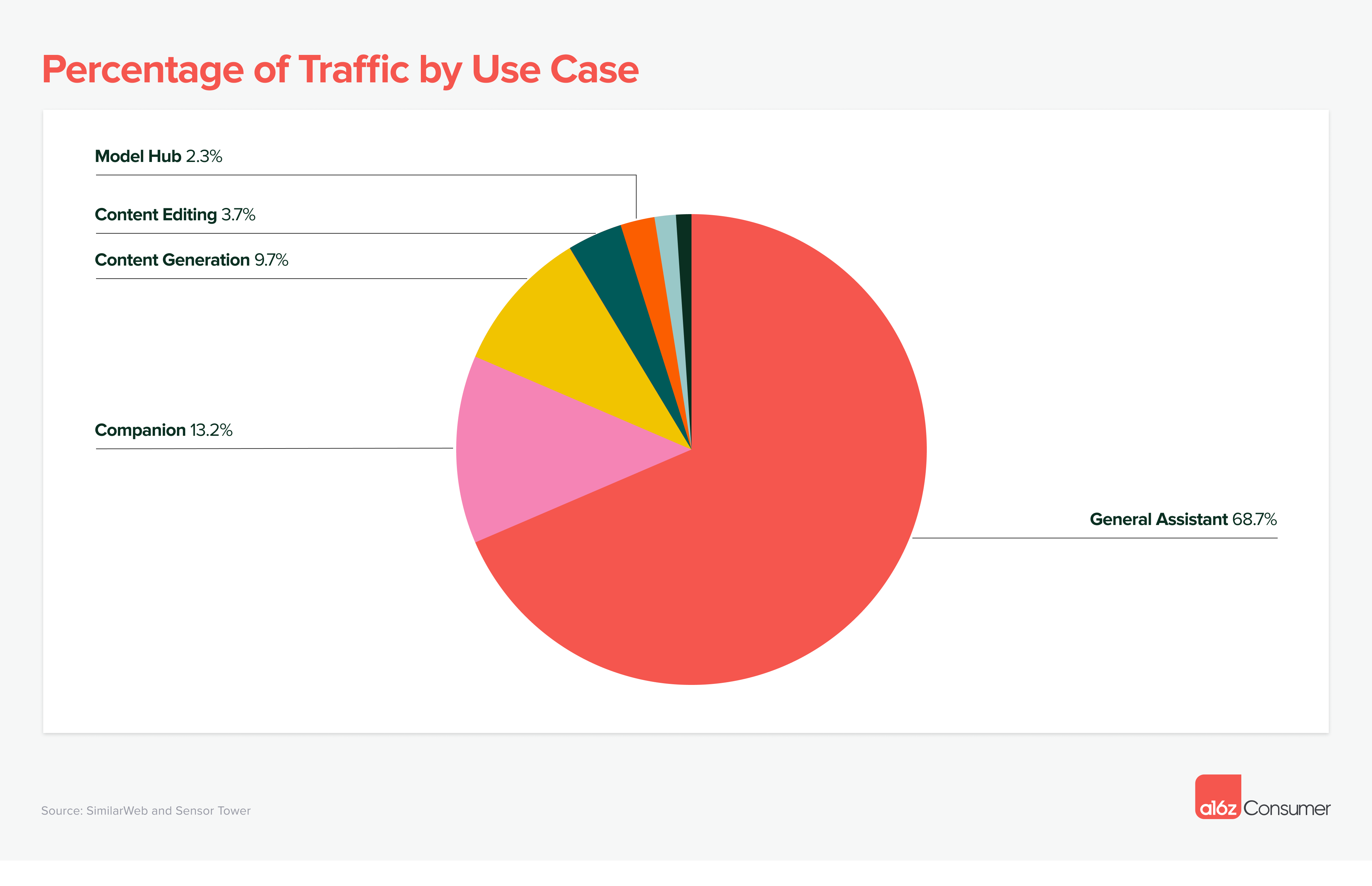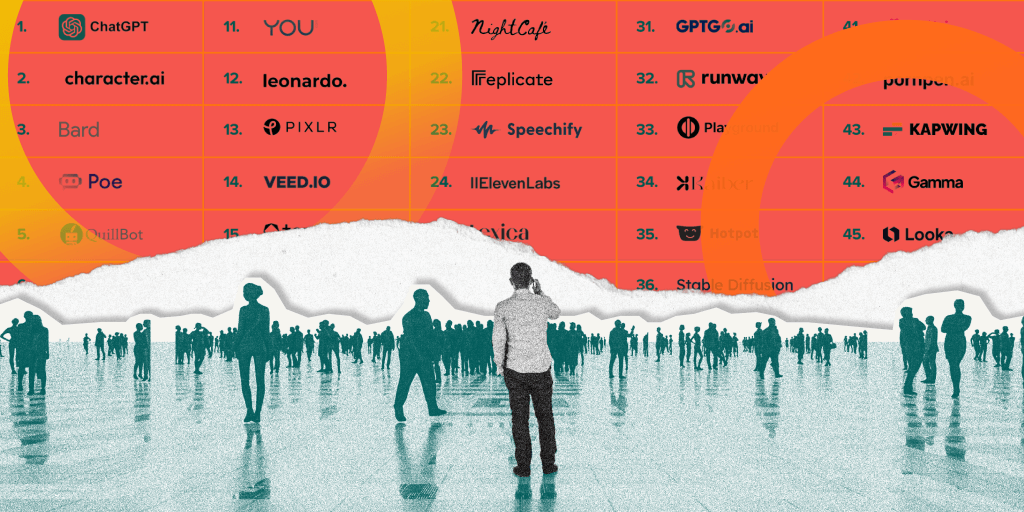Trends in Generative AI
Generative AI has been with us for a little over a year now - what trends are starting to emerge?
Generative AI is a type of artificial intelligence that is trained on vast amounts of data and generates what appears to be text or images that resemble something similar to what a human might be able to create.
The Andreessen Horowitz blog, a16z.com, has a great post outlining how consumers are currently using Generative AI and where the opportunities may lie for those wanting to get into the AI game.
Here are some key insights from the post:
Most brands in the category are brand new
80% of the brands listed in the Top 50 most-used AI products did not exist a year ago and nearly 50% of these companies are bootstrapped (i.e. they are operating with no external source of financial funding).
Understandably the market is new, as are the names and applications.
'One of the main differences between VC-backed and bootstrapped companies? The tech stack. Depending on the model size, setting up and training your own model can cost millions of dollars.'
Speaking of costs, it has been suggested that training the ChatGPT LLM cost around $100 million.
'The top 50 list is an almost even 3-way split between companies that (1) trained their own proprietary model, (2) fine-tuned an existing model, and (3) built a consumer UI on top of an existing model (e.g., “GPT wrappers”). However, it’s worth noting that of the top 10 products, half are built on their own model, while 4 are fine tunes—only one falls in the “wrapper” category. '

ChatGPT dominates
OpenAI's ChatGPT is by far the biggest title; CharacterAI follows quite far behind, currently enjoying just 1/5th of the monthly comparable traffic.
ChatGPT still commands the majority of the mainstream PR share of voice (and it's free) which is probably why its still the most well-known and more popular service on the list.

'ChatGPT represents 60% of monthly traffic to the entire top 50 list, with an estimated 1.6 billion monthly visits and 200 million monthly users (as of June 2023). This makes ChatGPT the 24th most visited website globally.'

The most popular use case for Generative AI is still as a 'general assistant' (nearly 70% of usage) with the 'companion' application in 2nd place at 13%.
Generative AI companies are already making cash
Consumers of Generative AI are happy to pay for a subscription to the tools.
'The average product on the list makes $21/month (for users on monthly plans)—yielding $252 (ZAR 4800 per user) annually.'
That's a far cry from the speculative business models that tech companies used to rely on in the past.
It's still very early
We are still at a very early stage of the AI revolution.
Some aspects of it (once again) are completely overhyped, while others are not put in the right context for clearer sense-making.
Judging by what is generating the most 'use case' traffic till now, the vast majority of people have yet to even begin to explore what this technology can do.
The hype cycle is obviously driving adoption for now, but as more gets spent on the marketing and brand building side of things as well as development of skillsets and training, this will shift usage into less obvious applications.
What we found useful from the post was the realisation of just how popular the 'companion' application of Generative AI is.
Using Generative AI as a 'thinking partner' is fun, but also practically aids in productivity and brainstorming - especially if you are a entrepreneur or freelancer working alone. It seems reasonable to assume that this application will see even more traction from here.
To read more, access the full article on the a16z.com site:

Related:



